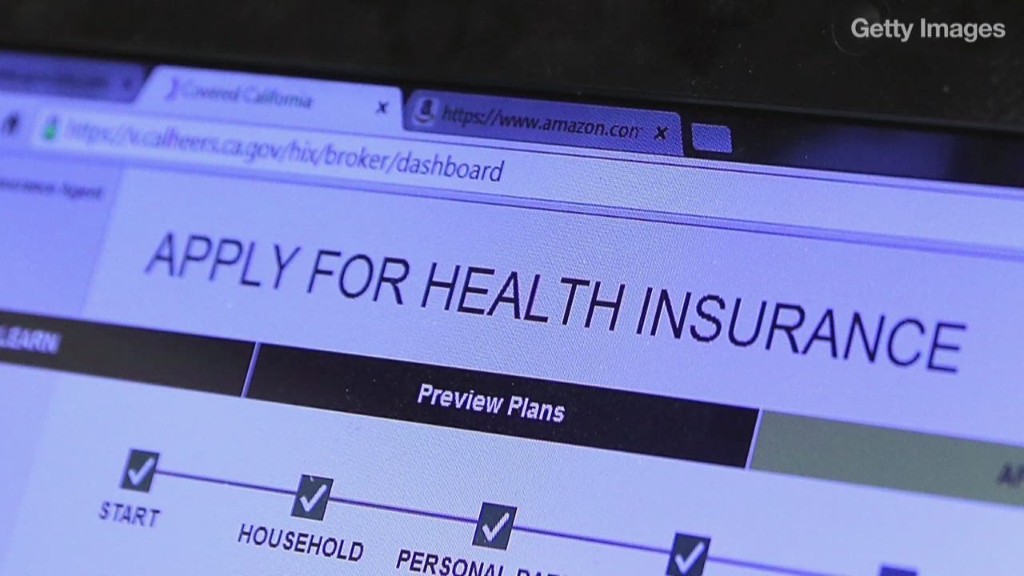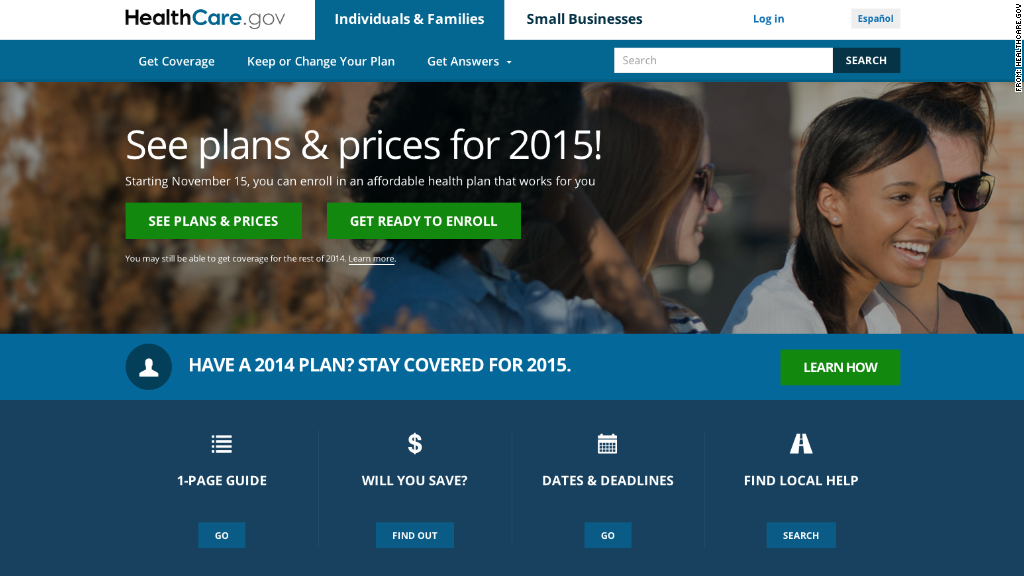
Obamacare 2.0 kicks off on Saturday.
That's when Americans can start buying coverage for 2015 or renew the plan they have on the Obamacare health insurance exchanges. The federal exchange, healthcare.gov, is handling open enrollment for 37 states, while 13 states and the District of Columbia are running their own exchanges.
That is if the websites work, of course. Last year, the federal exchange and many of the state exchanges blew up in spectacular fashion when open enrollment began on Oct. 1.
Whether Obamacare 2.0 succeeds, however, depends on more than just the websites functioning. There were lots of questions and concerns swirling around health reform. CNNMoney tackles some of the biggest ahead of open enrollment 2015:
1. How many people ultimately enrolled in Year 1? While the Obama administration boasted that 8.1 million people signed up for coverage on the exchanges, it didn't reveal how many had actually completed enrollment by paying their premiums until the fall. The answer is 7.1 million, or about 88% of those who picked plans, as of mid-October. That's in line with what insurers were saying all along.
Share your story: Tell us about your experience with Obamacare
2. What's happening to premiums for 2015? Premiums are rising 5.6%, on average, according to Pricewaterhouse Coopers, which has collected data on 43 states and the District of Columbia. The average premium is $381 across all ages and health coverage levels. But what will happen to your premiums will really depend on where you live.
Rate changes vary from a drop of 22% to a spike of 35%. Consumers, however, will have more choice, which could give them lower-cost options. There will be 63 more insurers offering plans across 44 states, according to the administration.
Related: 3 reasons to be optimistic you'll get a raise in 2015
For most enrollees, premium increases will be irrelevant because they receive federal subsidies that ensure they pay no more than 9.5% of their annual income. Some 87% of those who signed up on the federal exchange for 2014 coverage are paying an average of $82 a month.
But nearly 4 million poor, uninsured adults fall into the so-called "coverage gap" in the states that haven't expanded.
3. Will consumers have a wider choice of doctors and hospitals? A little wider probably, but consumers will still have to hunt for providers who accept their plan, said Larry Levitt, senior vice president at the Kaiser Family Foundation. Insurers are trying to keep doctor and hospital networks on the narrow side to keep premiums low. But the bright spot is that most enrollees will have a wider choice of insurers, which makes it more likely they'll also have more doctors and hospitals to choose from.

4. Will the website work? Good question. The Obama administration promises it will, but it remains to be seen what happens on Nov. 15. There's a new health secretary, Sylvia Burwell, and a new chief executive of the federal exchange, Kevin Counihan, who headed up the successful state exchange in Connecticut. President Obama said earlier this month: "We're really making sure the website works super well...we're double and triple checking it."
5. How many people will sign up? The goal for 2015 is between 9 and 9.9 million. That's far below the Congressional Budget Office's projection of 13 million, but is an acknowledgment that it will be harder to get people to sign up this time around, experts said. Outreach groups and state exchanges said they are ramping up their efforts to reach the uninsured. Many experts, however, feel that those who want coverage already signed up, which means it will be harder to convince the remaining uninsured to enroll.
Related: Obamacare's next fight for survival
6. Will more states expand Medicaid? It's not too likely, especially since Republican governors either held onto their seats or beat the Democratic incumbent. So far, 21 states are refusing to expand the government health insurance to all residents below 138% of the poverty line. Two states -- Utah and Indiana -- are looking into expanding but with their own variations on the program. It remains to be seen whether the pressure will build on the remaining holdout states, whose public hospitals are seeing their uninsured patient base jump because of the choice not to expand.
Some 8.7 million more people are enrolled in Medicaid as of August than were last year. This includes people who are newly eligible under Obamacare, as well as people who were qualified but hadn't enrolled.
7. Has Obamacare cost jobs? That's difficult to assess. There's little evidence to show that Obamacare is costing jobs, said Tim Jost, a law professor at Washington and Lee University, noting that employment has been growing all year. Some employers, however, have acknowledged keeping workers below 30 hours a week so they don't have to provide them with policies.


